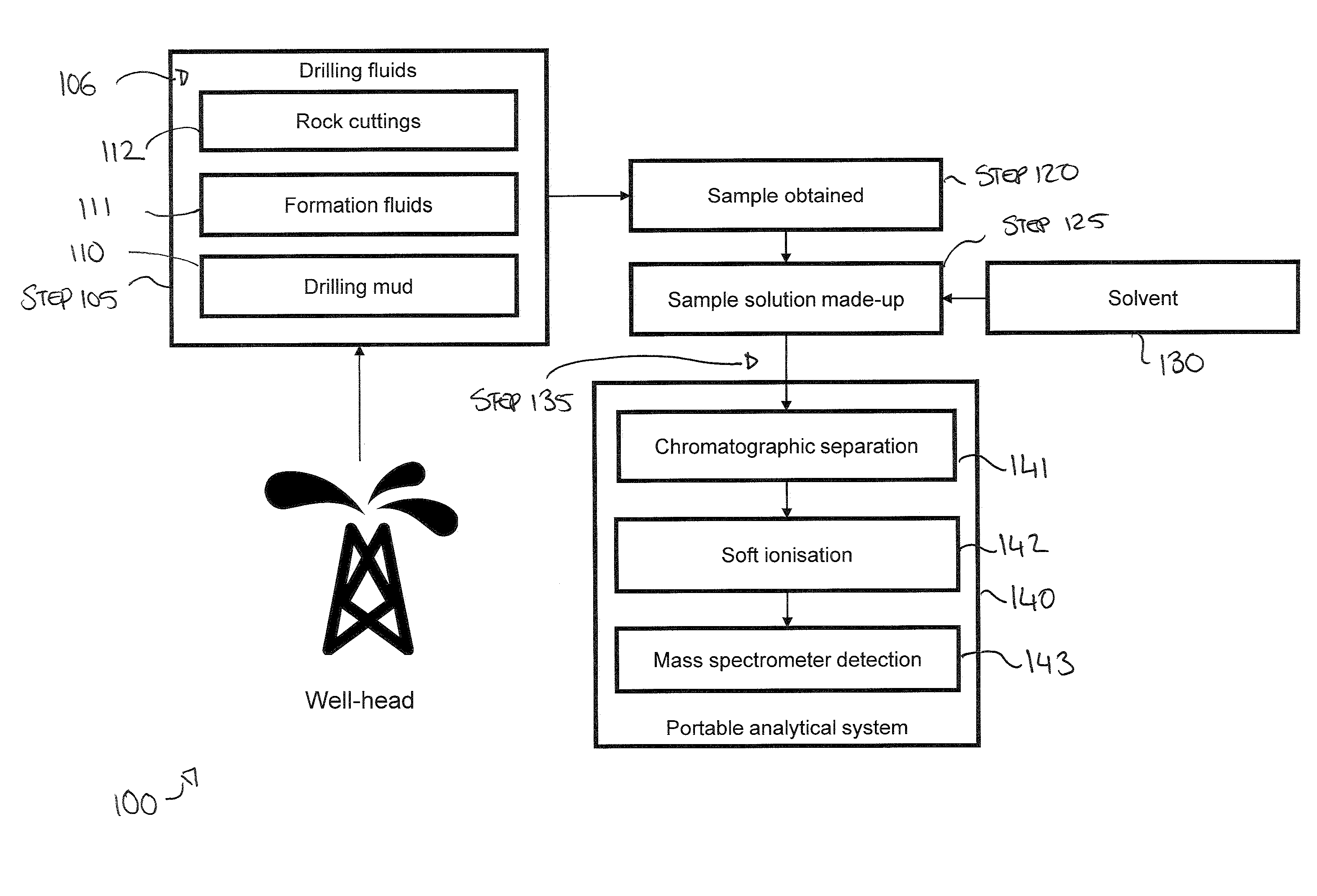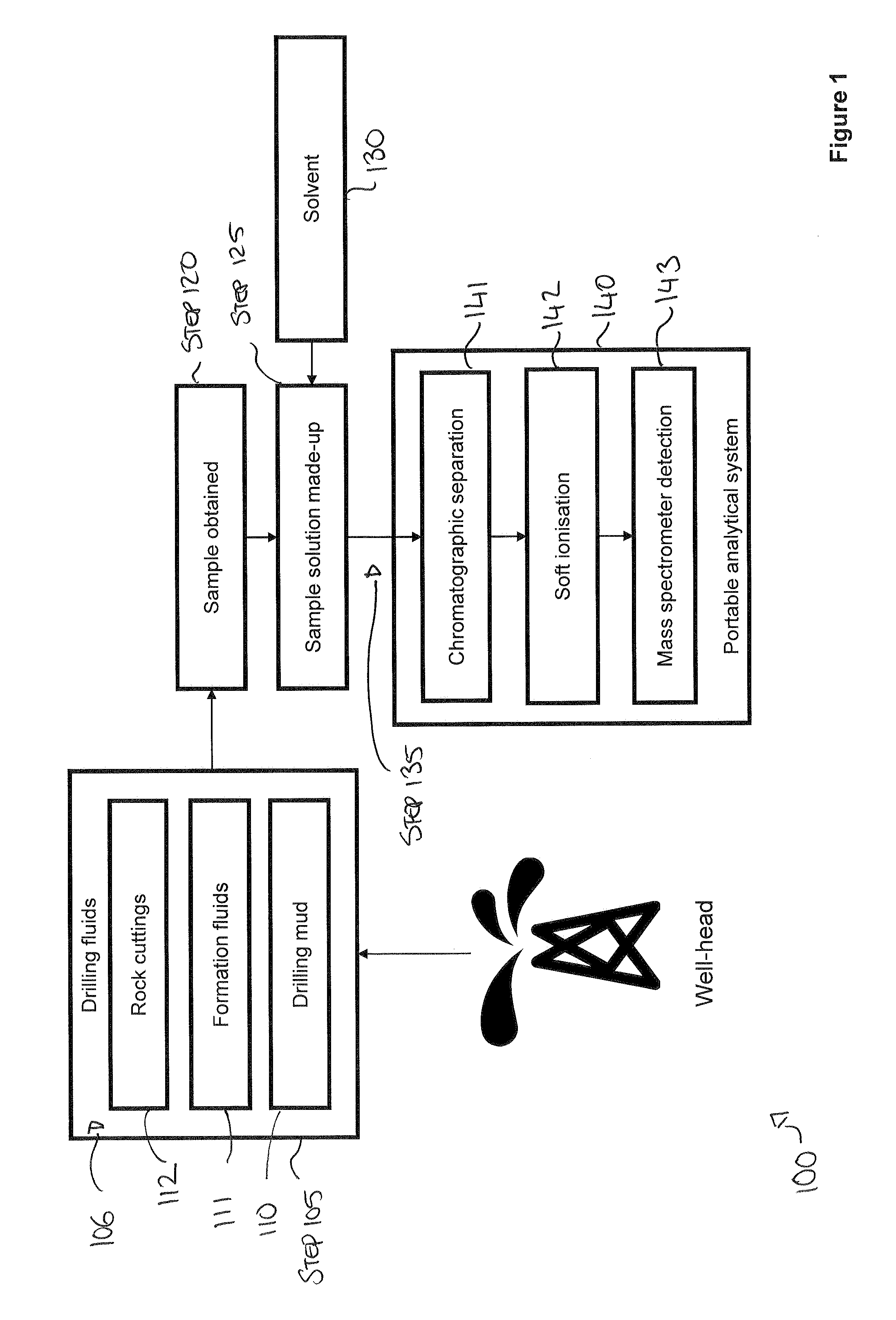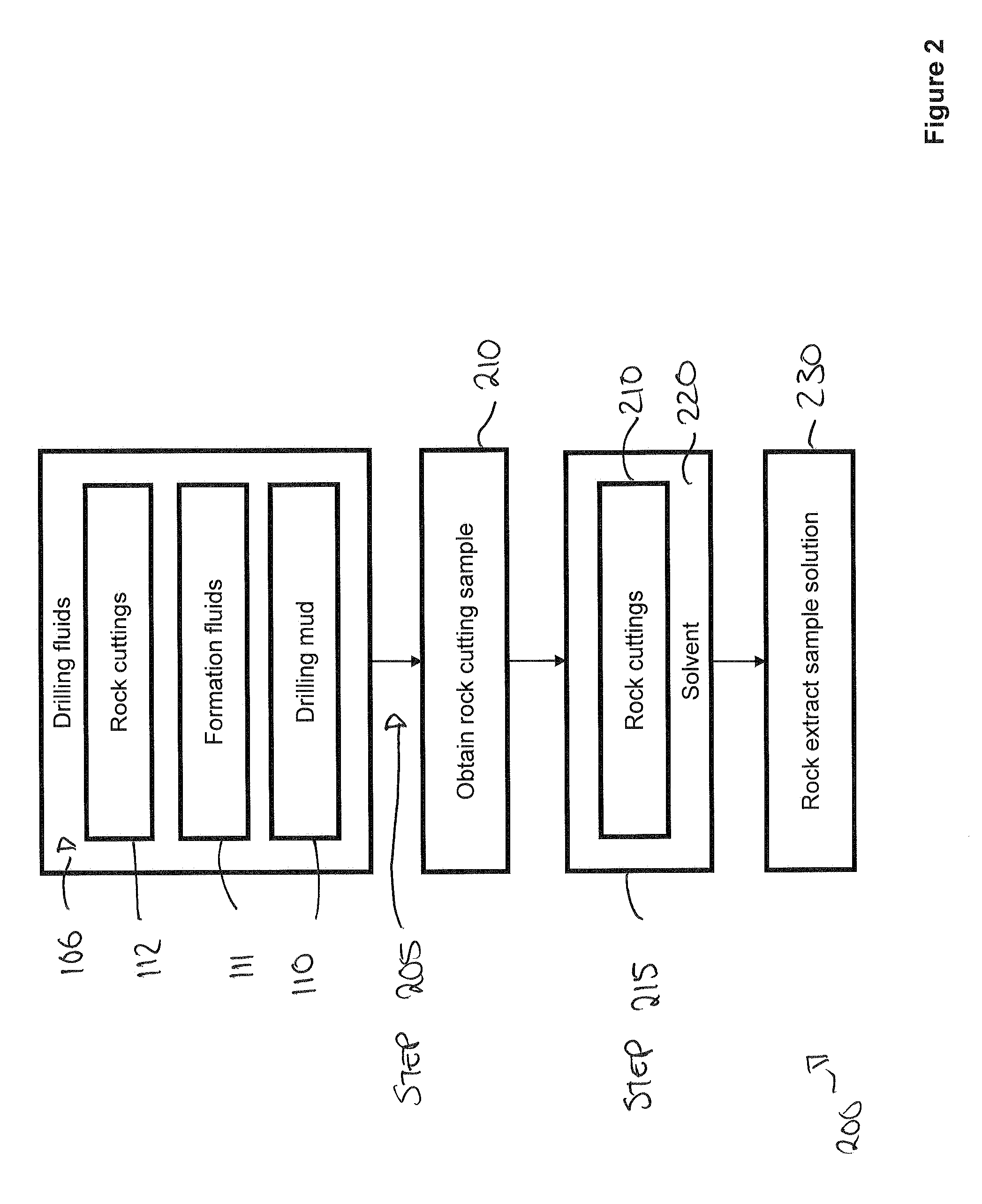Portable Analytical System for On-Site Analysis of Fluids
- Summary
- Abstract
- Description
- Claims
- Application Information
AI Technical Summary
Benefits of technology
Problems solved by technology
Method used
Image
Examples
Embodiment Construction
[0029]A detailed description of preferred exemplary embodiments of the invention is provided with reference to FIGS. 1 to 12.
[0030]It will be appreciated that drilling extracts and crude oil are ‘messy’ samples. Due to the complex chemical matrix that is a drilling fluid sample, or a bitumen sample extracted from a drilling cutting, lengthy chromatographic separation times are required to ensure adequate separation and purification of all the compounds in the mixture. Gas chromatographic (GC) retention times of the order of hours may be required before all the components of have eluted from the GC column. In fact, samples of interest may contain tens of thousands of components. While users may not need to separate and identify all of the components during drilling, nonetheless an analytical solution will need to rapidly separate and analyse complex samples and identify their components. In the context of modern-day drilling operations, where drilling speeds of hundreds of metres / fee...
PUM
 Login to View More
Login to View More Abstract
Description
Claims
Application Information
 Login to View More
Login to View More - R&D
- Intellectual Property
- Life Sciences
- Materials
- Tech Scout
- Unparalleled Data Quality
- Higher Quality Content
- 60% Fewer Hallucinations
Browse by: Latest US Patents, China's latest patents, Technical Efficacy Thesaurus, Application Domain, Technology Topic, Popular Technical Reports.
© 2025 PatSnap. All rights reserved.Legal|Privacy policy|Modern Slavery Act Transparency Statement|Sitemap|About US| Contact US: help@patsnap.com



